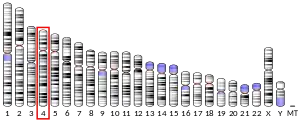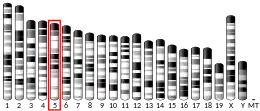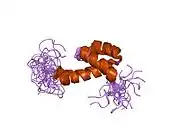| HOPX | |||||||||||||||||||||||||||||||||||||||||||||||||||
|---|---|---|---|---|---|---|---|---|---|---|---|---|---|---|---|---|---|---|---|---|---|---|---|---|---|---|---|---|---|---|---|---|---|---|---|---|---|---|---|---|---|---|---|---|---|---|---|---|---|---|---|
 | |||||||||||||||||||||||||||||||||||||||||||||||||||
| |||||||||||||||||||||||||||||||||||||||||||||||||||
| Identifiers | |||||||||||||||||||||||||||||||||||||||||||||||||||
| Aliases | HOPX, CAMEO, HOD, HOP, LAGY, NECC1, OB1, SMAP31, TOTO, HOP homeobox | ||||||||||||||||||||||||||||||||||||||||||||||||||
| External IDs | OMIM: 607275 MGI: 1916782 HomoloGene: 15859 GeneCards: HOPX | ||||||||||||||||||||||||||||||||||||||||||||||||||
| |||||||||||||||||||||||||||||||||||||||||||||||||||
| |||||||||||||||||||||||||||||||||||||||||||||||||||
| |||||||||||||||||||||||||||||||||||||||||||||||||||
| |||||||||||||||||||||||||||||||||||||||||||||||||||
| Wikidata | |||||||||||||||||||||||||||||||||||||||||||||||||||
| |||||||||||||||||||||||||||||||||||||||||||||||||||
Homeodomain-only protein is a protein that in humans is encoded by the HOPX gene.[5] It is an important regulator of cardiac development[6] and a marker of hippocampal neural stem cells.[7][8]
Function
The protein encoded by this gene is a homeodomain protein that lacks certain conserved residues required for DNA binding. It was reported that choriocarcinoma cell lines and tissues failed to express this gene, which suggested the possible involvement of this gene in malignant conversion of placental trophoblasts. Studies in mice suggested that this protein may interact with serum response factor (SRF) and modulate SRF-dependent cardiac-specific gene expression and cardiac development.[6] Multiple alternatively spliced transcript variants encoding the same protein have been observed, the full-length natures of only some have been determined.[5]
References
- 1 2 3 GRCh38: Ensembl release 89: ENSG00000171476 - Ensembl, May 2017
- 1 2 3 GRCm38: Ensembl release 89: ENSMUSG00000059325 - Ensembl, May 2017
- ↑ "Human PubMed Reference:". National Center for Biotechnology Information, U.S. National Library of Medicine.
- ↑ "Mouse PubMed Reference:". National Center for Biotechnology Information, U.S. National Library of Medicine.
- 1 2 "Entrez Gene: HOP homeodomain-only protein".
- 1 2 Chen F, Kook H, Milewski R, Gitler AD, Lu MM, Li J, Nazarian R, Schnepp R, Jen K, Biben C, Runke G, Mackay JP, Novotny J, Schwartz RJ, Harvey RP, Mullins MC, Epstein JA (September 2002). "Hop Is an Unusual Homeobox Gene that Modulates Cardiac Development". Cell. 110 (6): 713–723. doi:10.1016/S0092-8674(02)00932-7. PMID 12297045. S2CID 12189105.
- ↑ Li D, Takeda N, Jain R, Manderfield LJ, Liu F, Li L, Anderson SA, Epstein JA (November 2015). "Hopx distinguishes hippocampal from lateral ventricle neural stem cells". Stem Cell Research. 15 (3): 522–529. doi:10.1016/j.scr.2015.09.015. PMC 4704104. PMID 26451648.
- ↑ Berg DA, Su Y, Jimenez-Cyrus D, Patel A, Huang N, Morizet D, Lee S, Shah R, Ringeling FR, Jain R, Epstein JA, Wu Q, Canzar S, Ming G, Song H, Bond AM (April 2019). "A Common Embryonic Origin of Stem Cells Drives Developmental and Adult Neurogenesis". Cell. 177 (3): 654–668.e15. doi:10.1016/j.cell.2019.02.010. PMC 6496946. PMID 30929900.
Further reading
- Kook H, Epstein JA (October 2003). "Hopping to the beat. Hop regulation of cardiac gene expression". Trends in Cardiovascular Medicine. 13 (7): 261–4. doi:10.1016/S1050-1738(03)00107-5. PMID 14522464.
- Hartley JL, Temple GF, Brasch MA (November 2000). "DNA cloning using in vitro site-specific recombination". Genome Research. 10 (11): 1788–95. doi:10.1101/gr.143000. PMC 310948. PMID 11076863.
- Asanoma K, Matsuda T, Kondo H, Kato K, Kishino T, Niikawa N, Wake N, Kato H (January 2003). "NECC1, a candidate choriocarcinoma suppressor gene that encodes a homeodomain consensus motif". Genomics. 81 (1): 15–25. doi:10.1016/S0888-7543(02)00011-3. PMID 12573257.
- Chen Y, Petersen S, Pacyna-Gengelbach M, Pietas A, Petersen I (2003). "Identification of a novel homeobox-containing gene, LAGY, which is downregulated in lung cancer". Oncology. 64 (4): 450–8. doi:10.1159/000070306. PMID 12759545. S2CID 3205741.
- Kook H, Lepore JJ, Gitler AD, Lu MM, Wing-Man Yung W, Mackay J, Zhou R, Ferrari V, Gruber P, Epstein JA (September 2003). "Cardiac hypertrophy and histone deacetylase-dependent transcriptional repression mediated by the atypical homeodomain protein Hop". The Journal of Clinical Investigation. 112 (6): 863–71. doi:10.1172/JCI19137. PMC 193673. PMID 12975471.
- Adu J, Leong FT, Smith NR, Leek JP, Markham AF, Robinson PA, Mighell AJ (December 2002). "Expression of mOb1, a novel atypical 73 amino acid K50-homeodomain protein, during mouse development". Mechanisms of Development. 119. 119 (Suppl 1): S43-7. doi:10.1016/S0925-4773(03)00090-X. PMID 14516659. S2CID 11648378.
- Lemaire F, Millon R, Muller D, Rabouel Y, Bracco L, Abecassis J, Wasylyk B (July 2004). "Loss of HOP tumour suppressor expression in head and neck squamous cell carcinoma". British Journal of Cancer. 91 (2): 258–61. doi:10.1038/sj.bjc.6601952. PMC 2409811. PMID 15213722.
- Pauws E, Sijmons GG, Yaka C, Ris-Stalpers C (July 2004). "A novel homeobox gene overexpressed in thyroid carcinoma". Thyroid. 14 (7): 500–5. doi:10.1089/1050725041517020. PMID 15307938.
- Toruner GA, Ulger C, Alkan M, Galante AT, Rinaggio J, Wilk R, Tian B, Soteropoulos P, Hameed MR, Schwalb MN, Dermody JJ (October 2004). "Association between gene expression profile and tumor invasion in oral squamous cell carcinoma". Cancer Genetics and Cytogenetics. 154 (1): 27–35. doi:10.1016/j.cancergencyto.2004.01.026. PMID 15381369.
- Asanoma K, Kato H, Inoue T, Matsuda T, Wake N (August 2004). "Analysis of a candidate gene associated with growth suppression of choriocarcinoma and differentiation of trophoblasts". The Journal of Reproductive Medicine. 49 (8): 617–26. PMID 15457851.
- Wiemann S, Arlt D, Huber W, Wellenreuther R, Schleeger S, Mehrle A, Bechtel S, Sauermann M, Korf U, Pepperkok R, Sültmann H, Poustka A (October 2004). "From ORFeome to biology: a functional genomics pipeline". Genome Research. 14 (10B): 2136–44. doi:10.1101/gr.2576704. PMC 528930. PMID 15489336.
- Mehrle A, Rosenfelder H, Schupp I, del Val C, Arlt D, Hahne F, Bechtel S, Simpson J, Hofmann O, Hide W, Glatting KH, Huber W, Pepperkok R, Poustka A, Wiemann S (January 2006). "The LIFEdb database in 2006". Nucleic Acids Research. 34 (Database issue): D415-8. doi:10.1093/nar/gkj139. PMC 1347501. PMID 16381901.
- Kook H, Yung WW, Simpson RJ, Kee HJ, Shin S, Lowry JA, Loughlin FE, Yin Z, Epstein JA, Mackay JP (September 2006). "Analysis of the structure and function of the transcriptional coregulator HOP". Biochemistry. 45 (35): 10584–90. doi:10.1021/bi060641s. PMID 16939210.
- Kee HJ, Kim JR, Nam KI, Park HY, Shin S, Kim JC, Shimono Y, Takahashi M, Jeong MH, Kim N, Kim KK, Kook H (March 2007). "Enhancer of polycomb1, a novel homeodomain only protein-binding partner, induces skeletal muscle differentiation". The Journal of Biological Chemistry. 282 (10): 7700–9. doi:10.1074/jbc.M611198200. PMID 17192267.
- Americo TA, Chiarini LB, Linden R (June 2007). "Signaling induced by hop/STI-1 depends on endocytosis". Biochemical and Biophysical Research Communications. 358 (2): 620–5. doi:10.1016/j.bbrc.2007.04.202. PMID 17498662.
External links
- HOPX+protein,+human at the U.S. National Library of Medicine Medical Subject Headings (MeSH)
This article incorporates text from the United States National Library of Medicine, which is in the public domain.





